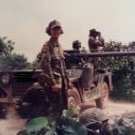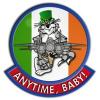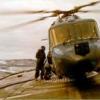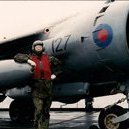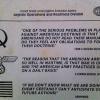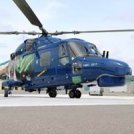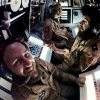Search the Community
Showing results for tags 'Lynx'.
-
Breda Ba.88B Lince 'Duce's Bomber' (SH72397) 1:72 Special Hobby The Breda Ba.88 Lince, or Lynx as it is in English, was designed in the mid-30s as a fast, heavy ground-attack aircraft, and its initial performance was impressive, breaking some speed records in its prototype form, before it was loaded with military equipment. It was at this stage that the sleek, twin-engined bomber took a decided turn for the worse, as the incorporation of the equipment necessary to carry out its military task induced severe instability in the airframe, and ruined its previously impressive performance. Part of the problem was caused by the aircraft’s outdated internal structure, and although it resulted in a sleek exterior that looked modern and performed well during testing, it meant that any bomb load would have to be placed semi-externally due to the lack of internal space. When the heavy frontal armament of three Breda-SAFAT .50cal machine guns, a rear-facing .303 that was operated by the second crew member, the weight of the guns, over-complex mount in the rear, and the ammunition gave the wings an unpleasant high loading that spoiled its performance in all aspects of its flight envelope. Apart from self-sealing fuel tanks, there was little protection for the crew or equipment, which was crucial for a ground-attack aircraft that was to fly perilously close to the enemy. Once the issue had been discovered, the project was soon cancelled, but political considerations and probably an element of ‘sunk cost fallacy’ thinking led to the project being reinstated, by El Duce, complete with the problems in their still unresolved state. The initial batch of aircraft reached service in 1940, and were found to be woefully inadequate, some barely able to get airborne when fully loaded, and others having problems executing simple manoeuvres once airborne. Attempts were made to lighten the aircraft to improve performance to an acceptable level, but the benefits were minimal, while the lack of ammunition, rear crew member and fuel had very powerful negative effects. Their initial service life was somewhat charmed, as there were few Allied aircraft to fight against, but once this started to change, the Ba.88s were sensibly withdrawn and given the ignominious task of acting as decoys, parked around airfields to distract Allied bombers from the more useful aircraft. An attempt was made to utilise the remaining airframes by extending their wings by two metres and improving the performance of their engines, but the arrival of the test airframes coincided with the Italian armistice with the Allies, and a few airframes that were evaluated by the Luftwaffe disappeared, which perhaps gives an indication of their feelings on the worthiness of the type. The Kit This is a re-release of a tooling from 2007 that originated under the MPM brand, but has been seen in Special Hobby colours a few years ago. The kit arrives in a red/white/grey themed top-opening box, and inside are three sprues of grey styrene, a clear sprue, decal sheet and instruction booklet that is printed in colour on glossy paper, and with markings profiles on the rear pages, plus a few adverts for other Special Hobby products on the back cover. Detail is very good, with finely engraved panel lines, cockpit detail, and a full representation of the twin rows of its radial engines. Construction begins by adding glazing to the fuselage halves, and painting the interior a green shade, fitting a trough insert to a cut-out in the port side of the nose. The upper wing is full span, and includes the upper fuselage and cockpit cut-out, creating the cockpit tub from sidewalls, bulkheads, framework and seat, installing an L-shaped control column with bow-tie wheel against one wall. The gunner’s seat is fitted facing rearward, and a ring is added above, attaching the rear gun once the cockpit has been mated with the upper wing, then closing the wings by gluing the lower surfaces into position. The engine nacelles are built on recesses under the wings, with bulkheads trapped between the nacelle halves, and a shaped cowling to the front, taking care to align the nacelles and the C-shaped gear location lines as per the diagrams. Once the glue on the wings and nacelles has cured, the fuselage can be glued into the space under the wings, making up the H-tail from two elevator halves with asymmetric tabs, slotting the verticals in from the front. As previously mentioned, the engines are provided as two banks of pistons that are joined together and capped off by the bell-housing at the front, both motors mounting on raised pegs that project from the front of the nacelles. They are covered by close-fitting cowlings that are made from two halves, plus an intake at the top, fitting a pair of short exhausts into recesses at the rear of the cowlings, then sliding them over the engines, combining the spinner and props, then inserting the axle into the bell housing. Two machine gun barrels are inserted in troughs in the nose at this stage, presumably removing one fixed gun in order to get off the ground. Under the rear of the model there are support struts between the fuselage and elevators, the inner ends locating right next to the single part tail-wheel with moulded-in strut and mudguard. The main gear comprises a H- strut that is glued to the front bulkhead of the bay, and is supported by a pair of tapered retraction jacks, fitting the two-part wheels with moulded-in mud-guards between the struts by flexing them apart, and adding a small intake to the front of each bay. The bays each have two doors running down the sides, with another pair are mounted on either side of the tail-wheel. A lengthy F-style pitot probe is glued under the port wing, and two antennae wires are strung between mid-fuselage and the tips of the elevators, using 0.2mm wire from your own supplies. Righting the model, the single canopy part is attached over the cockpit cut-out, leaving the rear gunner exposed to the elements. If you check your references, there are some rails around the gunner’s position that are intended to prevent self-sabotage in the event of over-enthusiastic gunnery. If you’re feeling adventurous, you could add these from brass or lead wire, using the photos online of a very happy crew posing with their new aircraft – probably before they tried to fly it! Markings There are three decal options included on the sheet, and you guessed it, there will be some complex Italian WWII camouflage to be done, which if you have read this far, probably means that you’re OK with that. From the box you can build one of the following: 100-4, 100a Squadriglia, 7 Gruppo, based at Campiglia Marittima, Livorno, 1940 76-7, 76a Squadriglia, Operated from Caselle Torinese, June 1940 76-6, 76a Squadriglia, North Africa, Autumn 1940 The decals are printed using a digital process and have good registration, sharpness, and colour density, with a thin gloss carrier film cut loosely around the printed areas. This means that the carrier film on their decals can be coaxed away from the printed part of the decal after they have been applied, effectively rendering them carrier film free, making the completed decals much thinner and more realistic, and obviating the need to apply successive coats of clear varnish to hide the edges of the carrier film. It’s a great step further in realism from my point of view, and saves a good quantity of precious modelling time into the bargain. Conclusion It’s a shame the aircraft was so mediocre, which is probably too kind, as it was a sleek and fast-looking model that is well-detailed. Not El Duce’s engineers’ finest work, but Special Hobby did a good job. Highly recommended. Review sample courtesy of
-

1/48 Airfix Westland Lynx AH-7
Back in the Saddle posted a topic in Helicopter / Autogyro / STOVL GB
I've just noticed this GB and have had a lonely helicopter kit in my stash for a while, so will be joining in with this one! It will probably be built OOB, due to the time constraints of a GB. I might be tempted to get some PE for it, but no guarantees... I'll take some photos tonight and get my WIP started soon.👍 -
After a break of 20 years, I re-started the hobby this year. This year was also the Singapore Airfix Cup restarted, so I ended building the Airfix Lynx to see where I stand in modeling. It was a trial and error journey since my modeling days 20 years ago. First try for AK acrylic paint, PE parts and the various techniques in modeling. I wasn’t disappointed in this modeling competition. Here’s some pictures of my completed model. What’s my prize? This.
- 12 replies
-
- 45
-

-
Now….how many WIP do I have in here? Quite a handful. I am starting one more so that I can complete it by December. There is an Airfix Cup competition coming up in December here in Singapore. It’s a Tiger theme competition and the only tiger I have in my stash is the Lynx. I am not sure if I can pull through this build with tiny PE parts for the interior and exterior. This will be my first venture into the PE parts world. There are already numerous Lynx build here and I hope to do it as well as the rest. Alright, I will have to work on my B747 and this Lynx as well. Both aircraft needs to complete by year end.
-
Hi all and have decided to take the plunge with this one. Airfix_Lynx_Falklands_40 by Dermot Moriarty, on Flickr More pics later and good luck with your builds! All the best, Dermot
- 18 replies
-
- 10
-

-
Another one for my Falklands collection - 1:72 Westland Lynx Mk.23, Argentine Navy, Falkland Islands, April 1982. Slightly converted Hobby Boss Lynx HAS.2 kit with Eduard PE parts and some scratch details. Decals are mix of DP Casper, Xtradecal, HB and spares. Thanks for watching!
- 27 replies
-
- 78
-

-

-
- Lynx
- Hobby Boss
-
(and 1 more)
Tagged with:
-
No luck with any of my references or internet search in trying to find out the actual size (height) of the ROYAL NAVY titles, code number and serial number on the Lynx HAS2/3. Can anyone provide these dimensions please? Looking for the white markings on MSG finish (1990s on) and the black markings on the DSG finish in the 1983/4 timescale. Thanks Peter
-
XZ691 Westland Lynx HAS.2 RNAS Yeovilton 29 JSTU 1980 So, another lynx. This one i am very happy with. Before i talk about the model, lets talk about the real thing. XZ691 was a HAS.2 that got selected to be used in OP BANNER in Northern Ireland. She was stripped of her standard scheme (Blue) and painted in Army/Marine Camo and was put in 29 JSTU (Joint Services Trials Unit) I could only find one picture of her, so anything on the port side could be fiction. Because the picture was taken at an angle, It was somewhat difficult to follow the camo. After putting decals on i realised that is was pretty inaccurate. The band on the Aft fuselage/start of the tail should be a lot wider in particular. The blue sun shield is way too opaque (I have no translucent blue and probably won't until after this lockdown). I did some minor modifications that are needed on Hobby post lynx. The Flotation bags are made from tissue paper, and I like the look quite a bit. The tags are made from Masking tape. Even though there isn't many decals, I used quite a range including 2 Xtradecals sheets, the kit sheet, and an Airfix sheet. This was my first time using Hataka paints (Red Line) and I am very happy with them and will buy more in the future.. The Olive Drab is Hataka and Black is Tamiya. WIP: Edit: I've just read that she was rolled out the factory in 1979, so she may have not been painted blue beforehand and rolled out with this camo.
- 19 replies
-
- 18
-

-
Another lynx, this time a Hobbyboss kit. This one will be a normal HAS.2, with a twist that will come apparent in the a couple days. As with all my recent lynx, I have detailed the interior a little bit. I made milliput soundproofing along with some detail to the seats. I kept the Cyclic (No collective in this kit) away from the observers position and tried adding something of a radar screen to the console, and some overhead console. I used some evergreen strips to try and make the door rails a bit larger like the actual lynx, although i could make them a bit thicker. On the inside of the doors i added some styrene to make the correct angle they sit at (they don't sit flush irl) The antenna on the tail are either spares or stratch built and i added the wire. The kit has the 'lump' on the tail for the reversed gearbox on later variants so i removed that Not too much has been added but this look is alot better than the kits.
-
XZ725 Westland Lynx HAS.3 HMS Osprey, RNAS Portland 702 NAS 1998 This is a slightly different style of RFI that i haven't done before, but i will try ans keep them like this. This was a very nice project, enjoyed it very much. Not accurate at all but that doesn't bother me in the slightest. I custom made the interior, adding some extra detail such as soundproofing (first time using milliput to do that, i would usually used foil) and adding various bits to the back of the seats. I had to convert the bas kit (HAS.2) into a HAS.3 with ESM. Luckily i had a spare nose ESM but needed to make my own sponson and Aft Fuselage sensors. I also had to scratch build a couplle antennas on the tail. I had to paint on the walk boards and flotation bag cover as i had no spare decals, and I am definitely gonna try that again (although the boards are way too light) In the pictures there might be a black line down the side, that is where i needed to screen shot my Instagram as i forgot about BM and deleted the pictures of my phone... not the best decision. Over all i think this has came out quite well, and is probably my last build of this year. Here is the WIP
-
Yes another Lynx, this time a HAS.3S (I think its an S, buts is a HAS.3 none the less) This one isn't any particular lynx that i have chose, i was just scrolling through HAS.2/3 pictures and picked one I liked the look of.... XZ725 in 1998 if anyone is asking I am using this kit to make it, but i needs to have ESM so i am scratch building the arials/sensors apart from the nose one as i have a spare. The sponsons have been changed using the spare from the last kit and milliput (I used the spare just in case i messed up) The reason i am not doing the oob kit is that ,well, 1.The decals aren't great (although i have spare) and 2.I don't fancy doing another blue lynx I tried to make the inside look a bit better so i attempted to change my usual way of using foil to make Soundproofing and use some Milliput (my new best friend... I mean modelling tool or material depending how you look at it) The back seat has had the back rest chopped off, making it more accurate, and because i dont have an inflatable seat, I've used the other seats and put them in how i have seen other naval lynx have them. I did a bit of work on the pilot/co-pilot seats aswell. And because i am always late posting on Bm them pictures were taken yesterday and i have progressed quite far.... You can see the Aft Fuselage sensors just next to the masking tape, i need to shape em a bit more and they should be good to put on. I have also done similar work to the engine cowling that i did to XZ236
-
Something you don't see often is this, a HMA.8 Development Lynx. I chose to make the first of 8 CTS aircraft, being XZ236. She was originally a HAS.2, until getting fitted with a seaspray, seaowl and other various equipment used on the HMA.8 in 1989. She still used the engine/gearbox system of a HAS.2, with steel blades and Anti-clockwise tail rotor, possibly getting upgraded later in the program with GEM-42s and CMRBs. I used the 1/72 Airfix Navy Lynx MK.8 (2001) kit and it was an interesting one. So the parts to make a HAS.2/3 parts were fine, the parts to make 'super lynx' were pretty terrible. They are made out of some lighter, softer plastic, that fit horribly. Some mods that i did do was on the engine cowling as imo its a slightly wrong shape. I needed to use a Hobby boss PID as I knocked off the kit one and it disappeared I did come across some problems but did try to resolve them.
- 16 replies
-
- 28
-

-
- Lynx
- development
-
(and 1 more)
Tagged with:
-
Hello Folks Haven't had much bench time in the last few months but I just managed to get this one done. It is the truly horrible Roden issue of the Skymaster with extra parts to represent an aircraft operated by No. 4 Sqn Rhodesian Air Force during the Bush War. After embargoes were imposed on the regime at the time by the major powers, Rhodesia turned to French company REIMS who modified civilian Cessna 337 Skymasters. The added weapons capabilities in the form of 2 x 303 Browning machine guns mounted above the cabin and strengthened underwing hardpoints gave the Lynx a formidable close air support capacity in a stable and east to operate platform. The aircraft carried no national markings. The kit is pretty average all round but the worst parts are the clear parts and the decals. Despite a lot of polishing and buffing the windows are barely see through and the decals were rubbish. I used aftermarket brass landing gear legs I got from Ebay to help cope with the metric ton of lead in the nose and some Master metal 303 barrels improved the look of the gun pods. The landing lights under the nose are MV lenses. Here's some pics.
- 25 replies
-
- 69
-

-

-
Apologies to all for my silence of late. Partly I’ve just been ludicrously busy. But I’ve also encountered a problem: I can’t paint in the flat I stay in during the week. [My mate’s flat: my mate’s rules] But since I started this job 90% of my modelling time has been on weekday evenings. So I’ve had a rethink. Dido has been (very carefully - & successfully) transported home, since she now needs paint before she can go any further. The Seaking is too fragile to risk SouthWest Trains, and other stalled builds (Walrus, Seafire 47) are also at the paint stage. So I have decided to start a new build, on the grounds that I can do building stuff during the week & paint at weekends. I’m typing this on a phone in a cafe, which isn’t ideal, so more later when I have something more user-friendly to hand. But for now, a sneak preview, which I’m sure you can work out easily enough. I actually plan to build 3 of these fairly simultaneously, 2 in 1/48 (my “normal” aircraft scale) & the other in 1/32 with some major detailing. I foresee much scratch building in my near future... [This is from the 1/32 beastie] More soon, including a bit more info about what I’m planning. Crisp
-
Augusta Westland Lynx Mk.8 Revell 1/32 History The initial design, then known as the Westland WG.13, was started in the mid-1960s as a replacement for the Westland Scout and Wasp, and a more advanced alternative to the UH-1 Iroquois. The design was to be powered by a pair of Bristol Siddeley BS.360 turboshaft engines. As part of the Anglo-French helicopter agreement signed in February 1967, French company Sud Aviation (later Aérospatiale) had a 30 per cent share of production work, Westland performing the remainder. It was intended that France would procure the Lynx for its Navy and a heavily modified armed reconnaissance variant for the French Army, with the United Kingdom in return buying Aérospatiale Gazelle and Puma for its armed forces. The initial naval variant of the Lynx, known as the Lynx HAS.2 in British service, or Lynx Mk.2(FN) in French service, differed from the Lynx AH.1 in being equipped with a tricycle undercarriage and a deck restraint system, folding main rotor blades, an emergency flotation system and a nose-mounted radar. An improved Lynx for the Royal Navy, the Lynx HAS.3, had Gem 42-1 Mark 204 engines, an uprated transmission, a new flotation system and an Orange Crop ESM system. The Lynx HAS.3 also received various other updates in service. A similar upgrade to the French Lynx was known as the Lynx Mk.4(FN). In the early 1990s, Westland incorporated some of the technology from the Naval Lynx-3 design into a less-radical Super Lynx. This featured BERP rotor blades, the Westland 30-derived tail rotor, Gem 42 engines, a new under-nose 360-degree radar installation and an optional nose-mounted electro-optical sensor turret. Royal Navy Lynx HAS.3s upgraded to Super Lynx standard were known in service as the Lynx HMA.8, and several export customers ordered new-build or upgraded Super Lynxes. From the 1990s onwards, Westland began offering the Super Lynx 200, which was equipped with LHTEC CTS800 engines, and the Super Lynx 300, which also had a new cockpit and avionics derived from the Agusta Westland EH101. Both of these models have achieved several export sales. In 2002, Flight International reported that more than 40 variants of the Lynx were in service, numbering almost 400 aircraft having been built for various customers The Model The original RN Lynx from Revell was released back in 2013 and it’s then them until the aircraft’s retirement to release the latest and final version. Although this is pretty much a re-box of the original Mk3 it does come with all the upgrades that the Mk8 was known for, namely the ugly nose FLIR on the modified nose panel, and under fuselage radome. It does also come with a different tail boom with separate fin allowing the possibility of posing the fin folded. The box the kit comes in is adorned with a nice painting of a Lynx in flight, unfortunately it is an end opening box, therefore and floppy as ever, so no shoving it in the stash with any more than one other kit on it. Inside there are fourteen sprues of grey styrene, two of clear and a largish decal sheet. The mouldings have stood up well and there is no sign of flash or other imperfections, but quite a few moulding pips. The internal details are very nicely moulded and includes the sound proofing and tie downs on the inside of the cabin, although it could be doing with being a little bit baggier. Construction begins with drilling out the requisite holes in the cabin floor before added the cockpit centre console frame, instrument panel pedestal and panel, which appears to be correct for the type. The rudder pedals, cyclic and collective levers for both pilots are then glued into position, followed by the centre console control panels. Each of the pilots seats are made up from five parts with the seatbelts moulded into the backrest and seat squab. Once assembled the seats are glued into position along with the cabin rear bulkhead, sidewalls and rear bench seat with front support frame. The middle set of six seats might look ok from a distance but they bear little resemblance to the real things as the end frames are solid, whereas you’d see the actual framework on the real items. There is a group of electronic black boxes fitted behind the pilots seat consisting of seven parts and the middle seat assembly is fitted at the same time. The roof soundproofing is fitted with a hand hold before being glued into position. Before the fuselage halves are closed up the sections are fitted either edge of the side doors and more holes are required to be drilled out. The engine exhaust plate is fitted with two, tow piece exhausts while the main rotor gearbox, which is very nicely represented is fitted with a drive pin and cap, so that, should you wish, the rotors can be turned once fitted. The cabin and main rotor gearbox assembly are then sandwiched between the fuselage halves as is the exhaust plate. The roof panel and engine covers are then glued into place, followed by the exhaust shrouds and several access panels. The underside of the fuselage is also attached at this point as are the underside tail panel and what looks like a doppler panel, but could be for the radio altimeter and orange crop panels. The intake grilles are unfortunately represented by clear parts, not mesh as per the rear aircraft. Personally, unless an aftermarket company can reproduce them the clear parts could make for good moulds for the modeller to produce their own mesh grilles. The underside is fitted with several more panels and aerials before work begins on the nose section. the nose comprises of five parts before the five piece FLIR unit is attached. The completed assembly is then glued to the fuselage. The thwo piece tail cone is fitted with the end bulkhead which includes the hinge and locking points, as does the two piece tail fin. If you were to pose the fin folded you will need to add some internal detail to both, including the tail rotor transitional gearbox in the fin. The kit does come with the locking handle for the fin as well, so it looks like Revell nearly decided to give the folding fin option in the kit, but decided to do it properly. The completed tail cone/fin is then glued to the fuselage, along with the side doors and the slides, windscreen and pilots doors, as well as smaller items such as the windscreen wipers and various blade aerials. The main undercarriage legs each comprise to halves for each oleo, two parts to the scissor links and two halves for each wheel. The completed undercarriage legs are then sandwiched between two halves of each sponson interior before the two part sponson itself is attached. The nose wheel oleo is also in two halves and fitted with a two piece scissor link, plus two, tow piece wheels. With all the undercarriage assembled they are glued into their respective positions, along with the large anti IR beacon under the front end of the tailcone, a large blade aerial on the port side near the beacon and a number of other items which this reviewer hasn’t a clue what they are. The SACRU hook is then attached, along with four strengthening straps and the hold down harpoon unit. The tail rotor is a single piece moulding to which the inner hub and outer control rods are attached before being fitted to the port side of the fin, while on the starboard side the horizontal stabiliser is fitted. Another large blade aerial is fitted where the sonar hole used to be while just aft and to starboard there is a retractable lamp fitted. The build now concentrates on to the weaponry. The modeller has the option to fit a 50 cal M2 heavy machine gun in the port doorway. This assembly is made up from no less than twenty two parts all told, and really looks the business, with the caveat that the cooling holes over the barrel could be better represented. The other options to add weapons to the Lynx include two Stingray torpedoes each from four parts or two Sea Skua anti shipping missiles, each consisting of eight parts. The launchers are made up from ten parts and if you’re not going to fir the gun you will need two launchers. Aside from the weapons, the kit also includes the rescue hoist consisting of ten parts and is fitted to the starboard side doorway. The HF aerial stays are fitted to the underside of the tail cone and fitted with a length of wire of the modeller’s choice. The last major assembly is the main rotor. The head is made up from thirteen parts, before the rotor blades are attached and the whole assembly fit to the main rotor gearbox finishing the build. Decals The single large decal sheet provides a complete stencil set for one aircraft all the marking specific to each option. The decals are very nicely produced with great colour density, in register and nicely opaque. The markings provided are for the following:- Lynx Mk8, 207 Flight, 815 Naval Air Squadron, HMS Iron Duke, March 2016 Lynx Mk8, 215 Flight, 815 Naval Air Squadron, HMS Monmouth, March 2012 Conclusion It’s very nice to see this kit re-released with the new parts to build the final version of this venerable helicopter, and it’s still a fabulous looking kit. Not being overly complex it shouldn’t take too much to make a good looking model out of it. I have heard there may be fit problems in some areas, but with a bit of care and patience I’m sure they won’t be too bad. It will certainly be an impressive model for any collection. There is certainly plenty of scope for super detailing if that is your wish. If you wish to pose your Lynx with the blades folded there si an aftermarket set that will help you with that. or
-
Hi, I've received a nice photo of a Lynx in desert livery from a friend a while ago asking "Nice, isn't it?" Well, I was hooked... even I have no previous experience with helicopter models. After a short research - I have NO previous knowledge about any Lynx - decision was made. I've grabed an AH7 boxing and did some conversion planing: 1) new 'metal' rotor blades 2) new bigger tailplane I have also ordered a complete set of Eduard PE (interior, exterior, seat belts) and mask. The last but not least is the Xtradecal sheet depicting the famous XZ221 J from Operation Granby... I have started rotor modification by creating new blade tips from a set of 'folded' blades: Final result... ... and remains Next is the new tailplane It's made from a 1/144 DC-9 tailplane Next will be interior details... S.
- 41 replies
-
Saw one of the above in a model shop yesterday for £6.99. Now the world is not exactly awash with Lynx moulds in 1/72. I was wondering whose mould it is. Is this a chance to obtain a Hobbyboss kit (for all its flaws) on the cheap?
-
Having just joined the forum, and being a Matchbox kit enthusiast, I thought I'd dive straight into the group build with the Westland Lynx. The kit itself is of the prototype version (Navy and Army) with the 3 windows in the doors. It's one of the kits I made as a boy, so I'm long overdue for another go at it. It'll probably be an OOB build with nothing fancy, although that may change. Pictures to follow.
-
This is the brand new special scheme to celebrate 37 years of Lynx service in the Danish armed forces. The port side represents the ongoing task around Greenland where the Danish Lynx is present 24/7/365. The starboard side represents the international operations (mostly in and around the Somali basin). The Danish Lynx fleet is gradually being retired, and the last Lynx will be retired by the end of 2017. Jens
-
Happy New Year everyone, I spent most of my schooldays on the edge of Salisbury Plain where Wessex, Lynx and Gazelle helicopters were almost a daily sight. I opted to model one from each of the main services in 1/72 scale. All are out of the box (apart from seat belts), brush painted but spray varnished. Need more practice on my masking! They were great fun to do. RAF Wessex (Italeri) - XS517was scrapped in 2002 RN Lynx (Hobby Boss) - XZ238 was last believed in storage at White Waltham Army Gazelle (Airfix) - XW844 is preserved at Fleetlands Hope you like
-
Pics from Graham James



